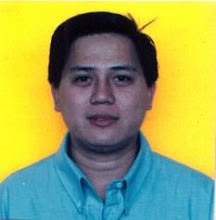English as our second language has been a means for us to join the stream of world culture. The knowledge of English keeps us well informed and abreast of the times. Every year, countless books and articles, break through in medicine and even speeches of international significance are readily available in English. Workforce mobility throughout the world also requires proficiency in the English language.
It is one of the primary goals of the education system to provide Filipino students with the functional English language literacy that will empower them for lifelong learning, enable them to be competent, to meet the challenges posed by the rapidly Changing world and to be able to cope with the global trends.
Many educators claim that the crucial problem of second language learners is to speak the language. According to Chastian (1994), second language educators have long espoused speaking as a major objective in second -language classes. A large percentage of students enrolled in second-language classes are there because they want to learn to speak the language…yet, it is the second-language students with some functional Degree of speaking competence who stands out and attracts attention. In spite of the stated goal of speaking in second -language classes, a class observation of many classes reveal only a small percentage of time develop to activities in which students are communicating with each other in the second-language. A casual observation of second-language classes indicates that a majority of students cannot or will not speak the second language.
This failure to produce graduates of second-language courses who can use the language accounts for some of the dissatisfaction with second-language learning among the students and the general public, admittedly, miracles cannot be achieved in a year, or even two, but given the appropriate classroom activities, one has to hypothesize that many students (not all) can learn to communicate about those topics covered in their texts. The task is to enlarge the vision of second-language educators to the possibilities that exist, to change unproductive activities for those that are more promising.
Addressing such problem of ineffective speaking skills development, language teachers must first realize that the second language learner needs to know how to articulate sounds in a comprehensible manner. He must also have the knowledge of grammar and vocabulary of language. But those are not the only things needed to become an effective speaker. He has to know how to begin and end conversations, to know the topics that can be talked about in different situations and to know to use and respond to different types of speech acts, and to know how to use language appropriately.
In many cases, students are found to actually have a strong desire to speak. They are just reluctant to speak because they are afraid of making mistakes and failing to find suitable words to express themselves well. If the teacher tries to encourage them to speak by using as many ways as possible -creating a good language environment, students will speak actively, willingly and naturally. Speaking as one of the four skills can be mastered only through practice.
In this view, teachers must provide students with the motivating speaking activities, patterns of real interaction, build a language speaking environment to encourage them to open their mouth to speak and make a lot of progress in speaking English-so that when they leave the womb of the classroom they are equipped with tools for generating unrehearsed language performance.
Subscribe to:
Post Comments (Atom)

No comments:
Post a Comment